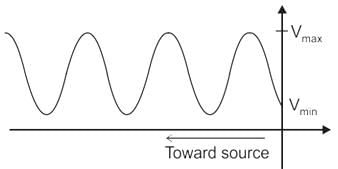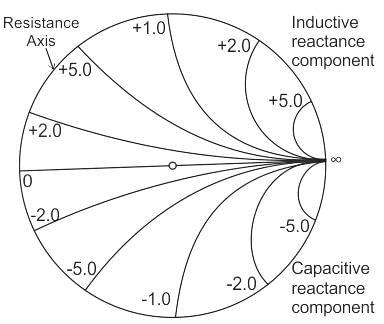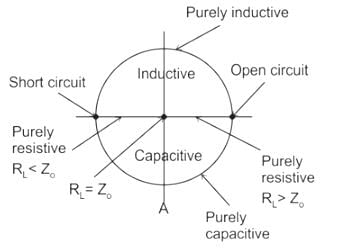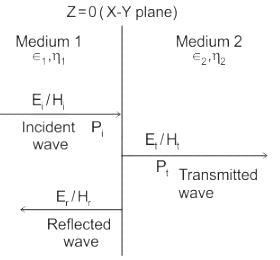Test: Smith Chart - Electronics and Communication Engineering (ECE) MCQ
10 Questions MCQ Test - Test: Smith Chart
Consider the following statements regarding the Smith's chart:
1. Smith's chart is a graphical indication of the impedance of a transmission line and of the corresponding reflection coefficient as one moves along the line.
2. λ distance on the line corresponds to a 720° movement on the Smith's chart.
3. The admittance chart can be obtained by shifting each and every point on the impedance chart by 90°.
4. Counter-clockwise movement on the chart corresponds to moving towards the generator.
which of the above statements are correct?
When the load impedance is equal to the characteristic impedance of the transmission lines, then the reflection coefficient and standing wave ratio are, respectively _________.
Identify the type of load, at lossless transmission line if the Voltage standing wave pattern is found to be


The impedances Z = jX, for all X in the range (-∞, ∞), map to the Smith chart as
A transmission line having characteristic impedance ‘Z1’ of varying length in series with a load impedance ‘ZL’ appears in a Smith Chart on
Impedance characteristics on a Smith Chart repeat after a distance of
Which is indicated the Reflection coefficient, If ‘n’ is refractive index of incident medium and n1 is the refractive index of transmitted medium?
In the following Smith Chart, Constant VSWR circle

the movement from y along a constant VSWR circle to y1 needs addition of











 …1)
…1)


 , where ZL = load impedance and Z0 = characteristic impedance.
, where ZL = load impedance and Z0 = characteristic impedance.
















